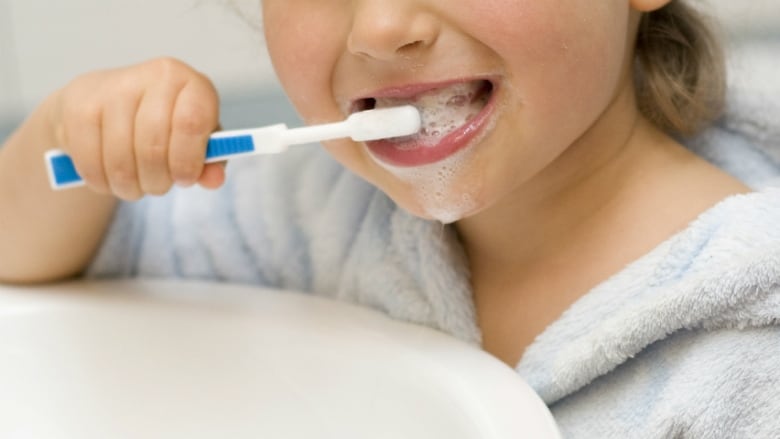Fluoride debate on tap in Prince George
On Saturday, November 15, people in Prince George will be asked to vote on this question: “The City of Prince George currently fluoridates its water supply. Are you in favour of the City of Prince George fluoridating its water supply?”
It’s a contentious issue, with passionate advocates on both sides of the debate. What you might not know is the debate has over sixty years of history.
Whether you use a traditional toothbrush, or an electric one, chances are you’ve come into contact with fluoride. Many types of toothpaste that you buy at a grocery store contain fluoride as a way to fight tooth decay, and you’ll also be given it on a trip to the dentist.
But if you’re in Prince George, you can get fluoride even without brushing your teeth. It comes for free, just by turning on your tap.
This has been the case since 1955, when Prince George became the first city in British Columbia to fluoridate its drinking water. The city was following the advice of medical and dental experts who made the recommendations after 50 years of research, sparked by American dentist Frederick McKay.
While setting up a practice in Colorado Springs in the early 1900s, McKay noticed that many of the locals had large brown stains on their teeth.
Researchers later determined this was because of high concentrations of naturally occurring fluoride in the water supply. Back then, people called this the “Colorado Brown Stain.” Today, it’s referred to by the more scientific name of fluorosis.
This is a purely cosmetic condition, one that either turns parts of your teeth bright white or, in more extreme cases like McKay saw, a deeper brown.
Fluorisis is caused by exposure to fluoride, which raises a question: Prince George has had fluoride in its tap water for over 50 years. So why don’t we have generations of people with brown stains or bright white spots on their teeth?

The answer is because researchers looking into the Colorado Brown Stain found that while high doses of fluoride can cause fluorosis, in low doses fluoride can help prevent cavities and dental decay, without causing the stains.
And once they figured that out, they embarked on what the American Center for Disease Control calls one of the greatest public health achievements of the 20th century: fluoridated drinking water.
Dispelling myths about fluoride
In 1949, in order to dispel some of the myths surrounding fluoride, Canadian Minister of National Health and Welfare Paul Martin funded research into sodium fluoride.
“There has been some misunderstanding about the value of the treatment,” read the statement announcing the research.
As soon as North Americans started putting fluoride in drinking water back in the 1940s, the debate was on.
Optimistic advocates predicted whole generations of children raised without cavities. Opponents, though, had different concerns.
Canadian broadcaster Gordon Sinclair famously challenged the practice of putting fluoride in Canadian drinking water.
“You know the proponents of this chemical have never claimed that is helpful to the teeth of people like you or me or any other adult or anyone over the age over the age of 14 or 15. And therefore, I thought that it could be given in alternate ways to the children,” Sinclair told the CBC’s Barbara Fromm, decades ago on As It Happens.
“I’ve never opposed the fluoride, Barbara, but I’ve certainly opposed and continued to oppose the pumping of it into the public water supply.”
And Sinclair was not alone. In the United States anti-fluoride sentiment loomed large, even prompting parody in the film Dr. Strangelove.
Conspiracy theories abound
It may have been ripe for parody but for some the idea that fluoride was a Cold War plot was no joke.
Jonathan Kay is the author of Among the Truthers, an exploration of conspiracy theories from throughout U.S. history.
“The thing about fluoridation is it was one of the first big public health movements that really affected people on a everyday basis,” he said. “It was completely invisible and it was largely tasteless and you just had to go on trust that this chemical was going to improve your health rather than do bad things to you.”
And this was happening during a time when people were increasingly suspicious of science.
“There was the atom bomb and people were learning about radiation and radiation poisoning and that was something else that you couldn’t see but which could do horrible things to your body,” Kay said. “And so there was a lot of suspicion about drinking water, about what are we doing to our drinking water? Are we poisoning the population?“
Debate re-ignited in Prince George
Over the years the anti-fluoride debate has evolved from suspicious chemical to suspected communist plot to the current movement to have it removed from the water in Prince George.
At a recent presentation to city council, anti-fluoride activists argued that new research is needed on the issue of fluoride.
They also also say it’s costly, when much of the water winds up on lawns and in bathtubs, and they raise the moral question of putting medicine in the water without the public’s consent—some saying the practice violates medical ethics.
Not so, says the pro-fluoride camp.
Dr. William Osei is the chief medical officer for Northern Health. He is part of a coalition of doctors, dentists, and professors who have come together to make the case for fluoride.
“It is important to vote yes to keep water fluoridation in Prince George,” he told council at the same meeting.
The proponents say water fluoridation is safe, scientifically sound, and helpful to vulnerable populations.
“Everyone benefits. Especially children and those with low incomes,” Osei told council.
And proponents have some major backup—the ‘yes’ side is supported by the British Columbia Dental Association and Health Canada, with advocates flying in to make the case for fluoride in the lead up to a civic referendum vote.
But even with these credentials, the fluoride advocates may be stuck in a losing battle.
Calgary, Windsor and Waterloo stop fluoridation
In recent years, over 30 Canadian cities have decided to stop fluoridating water, including Windsor, Waterloo and Calgary.
However, the decision to remove fluoride in those cities might actually help the case to keep it in Prince George.
In Calgary, dentists say they’ve seen a spike in the number and severity of cavities in young patients ever since fluoride was removed three years ago.
Dr. Sarah Hulland is the head of the Alberta Academy of Pediatric Dentistry.
“We actually have an increase in the severity of the cavities that we do see, and we see an increase in the rate that the cavities actually go from a small spot to a very large painful cavity in the tooth,” she told CBC in Calgary.
The fluoride question will be on Prince George civic election ballots November 15 as part of a non-binding referendum.
It will then fall to city council to decide whether fluoride stays or goes.


